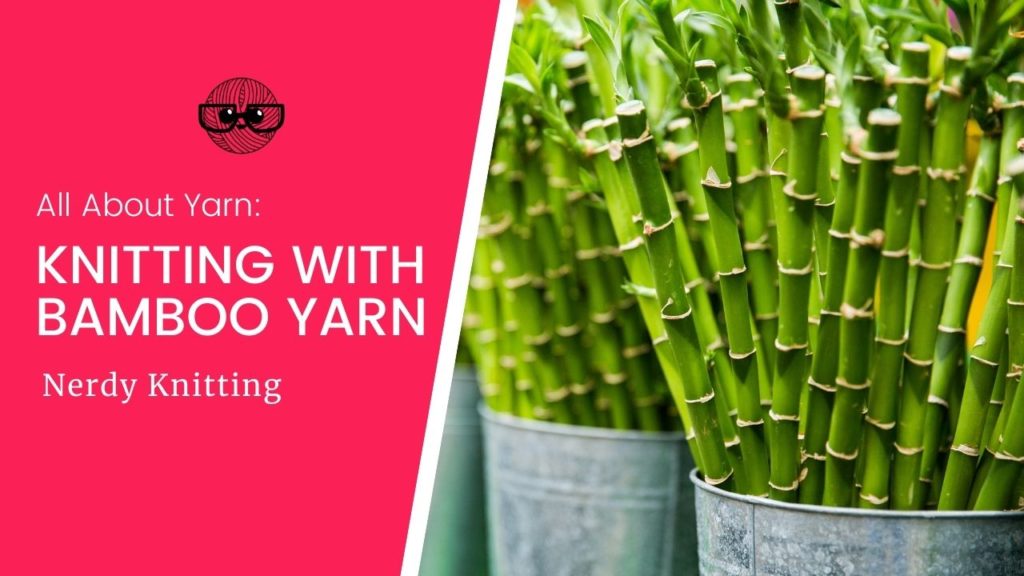Bamboo yarn is a wonderful choice for knitting (it’s a great choice for summer tank tops and tees) but, as with any type of yarn, there are some things you should know before you start knitting with bamboo yarn. Bamboo yarn has some advantages that make it a dream to work with but knitters should also be aware of the disadvantages – especially before using bamboo as a substitute yarn for a knitting project.
In this article we’ll look at a few of the basic things you need to know to make your next bamboo knitting project a success.
- Biosynthetic Yarns
- Properties of Bamboo Fiber
- Knitting with Bamboo Yarn
- Choosing Appropriate Knitting Patterns
- Caring for Finished Projects
- Buying Bamboo Yarn
Let’s take a closer look at each of these areas. Then you’ll know exactly when to choose bamboo yarn for your next knitting project.
Some links below are affiliate links. If you click through and make a purchase I may receive a small commission at no extra cost to you. See the disclosure policy for more information.
Biosynthetic Yarns
All fibers for knitting can be divided into four broad categories – animal fibers (like wool, silk, and alpaca), plant fibers (like cotton and linen), biosynthetic fibers (like rayon and bamboo), and synthetic fibers (like acrylic and nylon). Bamboo yarn fits into the biosynthetic fiber category because it’s a natural plant fiber but it requires heavy processing to turn the material into spinnable fibers.
It falls within that category between plant fibers and synthetic fibers because it is a plant fiber like cotton or linen, but unlike those fibers, it isn’t easily processed. Instead, it’s necessary to treat it like a synthetic fiber and use a specific process to break the plant matter down and then use specialized extruders that create the fibers that can then be spun into usable yarn.
But, while it may take heavier processing methods to create spinnable fibers, bamboo is a renewable resource that grows quickly without fertilizers and pesticides and can be harvested without killing the plant. Since it’s a naturally occurring resource, it’s biodegradable. This makes it a good choice for those who are concerned about the environmental impact made by their choices and purchases.
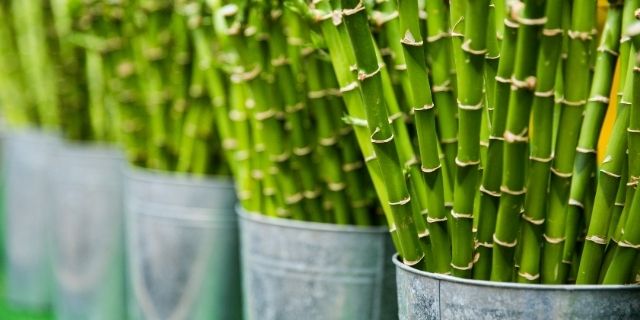
Bamboo – Rayon, Modal, Tencel or Viscose?
Sometimes you may see a variety of different names on your yarn labels (Rayon, Viscose, Bamboo, Modal, Tencel/Lyocell) but they are actually all processed in the same manner and the names could be used interchangeably. They are all natural wood resources that use a synthetic process to extrude and create the fibers used for the yarn.
Rayon is the precursor of bamboo yarn – it was the first manufactured fiber that came from a natural material (wood pulp). The wood pulp is chopped and put through a chemical process to separate the useable cellulose fibers. This fiber goes through a few more steps before it’s finally extruded through a specialized spinneret that turns the fibers into filament strands.
The resulting fibers can be changed depending on how they are treated. The filaments can be cut to various lengths before spinning – which changes the structure of the final yarn. Some may feel like silk while others feel like cotton – but it’s all done in the processing, the materials are actually the same.
Bamboo yarn is basically a rayon that uses bamboo as the source material – it goes through the same process to turn the bamboo stalks into useable fibers and the final resulting yarn.
But you might also see a few other names on your yarn labels that fall within this biosynthetic category:
Viscose Rayon is one type of Rayon (an early form of rayon). It’s derived from the wood pulp of any of the following sources – beech, pine, spruce, hemlock, eucalyptus, bamboo, soy, or sugarcane.
Modal and Lyocell (Tencel is one brand you may see) are also types of Rayon. Modal is derived from beech trees and Lyocell is produced from a variety of wood sources (like Viscose). Both have improved on the processing of standard Rayon and have less of an environmental impact because all the chemicals used in the process of creating Modal and Lyocell fibers can be recycled. They are also stronger than Viscose Rayon. Knit Picks Shine Sport (pictured below) is a good example of a yarn that includes Modal fibers.
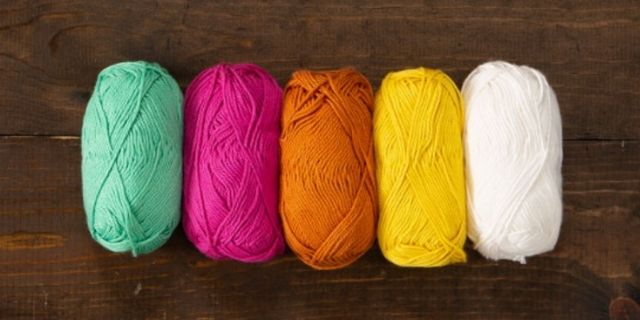
Sources: What is Viscose? – The Principles of Knitting – Tencel.com
Properties of Bamboo Fiber
Bamboo (as well as other Rayon, Viscose & Modal yarns) share the same advantages and disadvantages. But some of these characteristics can be affected or changed depending on how the fibers are manufactured. For example, some bamboo yarns may feel soft and smooth with a silk-like sheen. Others may feel strong and durable with a cotton-like texture. Both are still bamboo yarns, but the way the fibers have been processed and spun are different – which affects the final yarn.
I’ll include all of the advantages and disadvantages of these yarns below, but just be aware that each of these characteristics are affected by the manufacturing process and will vary from one yarn line to another, depending on what specific characteristics were desired.
Advantages
Bamboo yarn has some wonderful properties (that are also shared by other Rayon, Viscose & Modal yarns). They are:
- Soft & smooth
- Beautiful drape
- Hypoallergenic
- Antibacterial
- Breathable
- Lightweight
- Fade resistant
- Strong & durable
Bamboo is a great choice for warm weather garments because of it’s breathable and lightweight characteristics. It’s also adds beautiful drape and shine to light summer shawls and wraps.
Disadvantages
While there are plenty of good reasons to choose bamboo yarns, there are also a few things knitters should be aware of. These disadvantages include:
- Tendency to lose shape
- Inelastic
- Susceptible to mildew
- Loses strength in water
As long as the knitter is aware of these disadvantages and keeps them in mind when choosing appropriate projects for their yarn, bamboo yarns are a great choice for summer garments or items for babies and kids.
Discover the Confidence You Need to Fix Your Knitting Mistakes
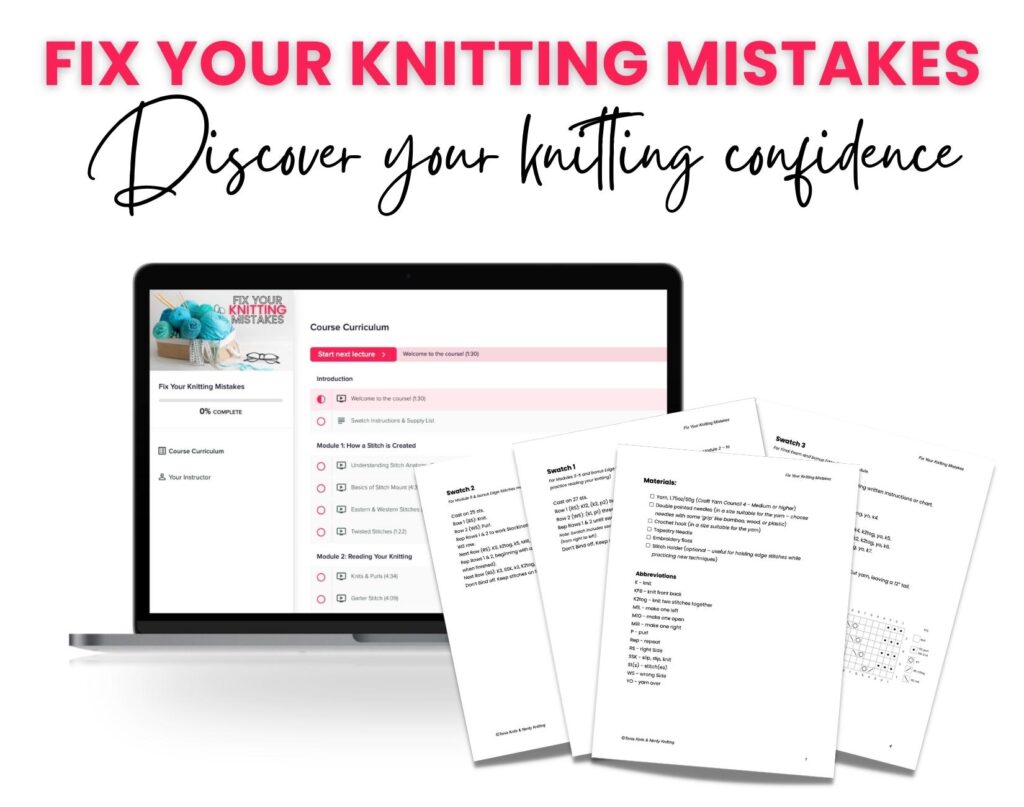
By the end of this six-part self-paced course, you’ll be able to read your knitting, recognize a variety of knitting mistakes, and understand how to fix them.
Knitting with Bamboo Yarn
Bamboo yarn is very nice to knit with. It is soft and feels lovely on the hands. But it does sometimes have a tendency to split while knitting, so that’s something to be aware of. Depending on the blend of fibers, bamboo is also on the slipper side (it’s a great substitute for silk) so wood or plastic needles with a little more grip may be a better choice. Be aware that stitches may slip and slide right off your needles if you’re using metal or slick knitting needles.
Because of its tendency to lose shape, it’s a good idea to treat it almost like a superwash wool and work a bit tighter to help it keep it’s shape and structure intact. These factors also depend on the specific yarn and how it was manufactured – that will affect the final characteristics of each yarn.
Choosing Appropriate Knitting Patterns
Bamboo blends lend themselves well to summer knits – lightweight tops and tees as well as summer cardigans. The yarn also has a beautiful drape (and, depending on the yarn) a nice silk-like sheen making it a great choice for light wraps and shawls too. But, because of the inelastic nature and tendency to lose shape, choose your patterns carefully – especially when it comes to sweaters and tops.
Look for patterns that use seams if it’s a heavier or highly textured garment. The seams provide additional structure.
If it’s a seamless construction, look for a lightweight yarn blend with some drape and movement. You could also look for a yarn with a chainette construction which produces a lighter yarn. The heavier the yarn, the more the garment will sag and lose shape.
Because bamboo yarns and blends are soft and usually washable (check the yarn label just in case), they make a great choice for kids and baby garments as well.
Sometimes you’ll see bamboo blend yarns used for dishcloths and washcloths. While these are usually soft and absorbent, bamboo does lose strength when wet and bio-synthetic yarns can be prone to mildew. You can still knit dishcloths with it (they will be very soft and nice to use), it’s important to be aware of the drawbacks and wash and dry your hand knit cloths often.
Caring for Finished Project
Bamboo (and other Rayon, Viscose, and Modal yarns) and bamboo blend yarns are usually easy to care for (but always check the yarn labels just in case). They are usually machine washable (and, depending on what it’s blended with, may be machine dry-able).
This makes them a great choice for summer garments and kids things – those things that are probably going to be washed more often.
Simply wash in your washing machine (the gentle cycle is still a good idea for hand knit garments) and lay flat to dry or, if the blend allows, machine dry (tumble dry on low heat) when needed. As with any yarns, be sure to check the yarn label for care recommendations.
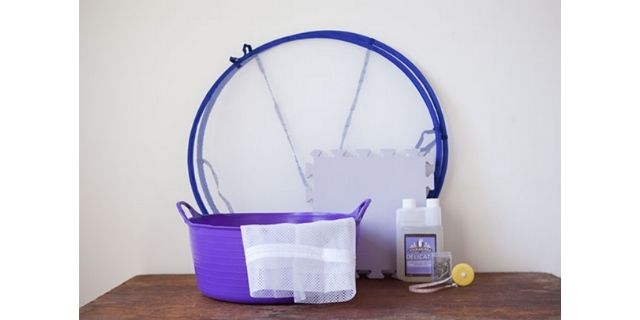
Blocking Bamboo Knits
Projects knit in bamboo or bamboo blend yarns don’t require any special blocking techniques. (In its simplest form, blocking is just caring for your hand knit garments.) If washing and drying or following the care instructions for the yarn doesn’t produce the result you want or if the project has some lace that you’d like to open as much as possible, steaming is a good choice (unless the yarn blend contains acrylic or nylon, which should not be steamed. Wet block instead).
Pin the garment to its final shape and finished measurements on a blocking mat, being careful to stretch any lace or other openwork designs to showcase them. Use a handheld steamer or iron to apply steam to the garment, holding the steamer or iron above the garment (and not pressing the appliance directly to the garment). An optional step is to place a pillowcase in room temperature water until soaked. Wring out any excess water and place the wet pillowcase over the garment. A hot iron can be placed directly on the wet pillowcase to steam block the garment, moving the iron until the pillowcase is dry.
Buying Bamboo Yarn
100% Bamboo yarns are a bit difficult to find. Bamboo (as well as other Rayons and Modal yarns) is often blended with cotton, linen, wool, and other fibers. This reduces the cost of the yarns and also adds a lightness and additional softness to the heavy cotton and linen fibers. Depending on how the bamboo or modal fibers are manufactured, it can also add a subtle sheen or additional drape to the resulting yarn and fabric.
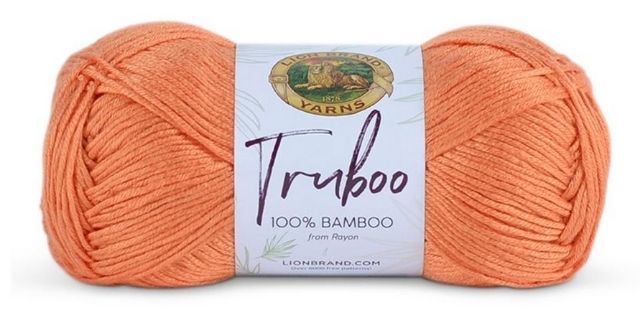
100% Bamboo Yarns
If you’d like to try a 100% bamboo yarn, here are a few options:
Bamboo & Other Rayon Blends
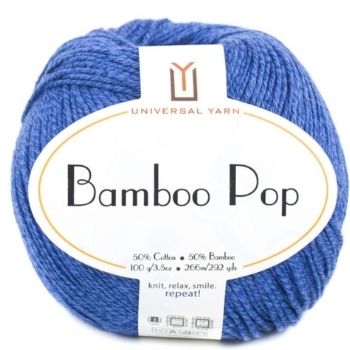
Bamboo is most often blended with other fibers (especially cotton and linen) to add softness, lightness, or shine. It can be added to a wool blend for softness and shine. Or it may be added to a blend to add some additional drape to the knit fabric.
Yarns that include other types of rayon are used for the same reason so you’ll find a variety of bamboo, modal, tencel, and viscose blends listed here as they can be used interchangeably.
- Knit Picks Shine Sport (Modal)
- Knit Picks Shine Worsted (Modal)
- Stylecraft Linen Drape (Viscose)
- Cascade Yarns Luminosa (Viscose)
- Lana Grossa Solo Lino (Viscose)
- Rowan Felted Tweed Aran (Viscose)
- Bremont Tamara (Lyocell/Tencel)
- Lion Brand Coboo (Bamboo)
- Universal Yarn Bamboo Pop (Bamboo)
- Sirdar Snuggly Baby Bamboo DK (Bamboo)
- Patons Silk Bamboo (Bamboo)
- HiKoo CoBaSi (Bamboo)
Quick Questions & Answers
Just want a quick answer to your knitting with bamboo yarn questions? Here are some quick Q&As for you:
What can I knit with bamboo yarn?
Bamboo yarn (and bamboo blends) is great for summer tops, tees, lightweight cardigans, and summer shawls and wraps. The yarns are generally soft and lightweight with a nice drape and shine, making them great for summer.
If the bamboo is blended with an easy care yarn like cotton, the resulting yarn is soft and easy to care for, making it a great choice for kids and baby garments and accessories as well.
How soft is bamboo yarn?
Bamboo yarn is soft, silky, and smooth. It can be manufactured in different ways to change the properties of the resulting yarn, but in general, it is quite soft to the touch.
Does bamboo cotton yarn shrink?
A bamboo cotton blend yarn will shrink when it’s washed in hot water (it could even shrink up to 10%). Because of this tendency, it’s a very good ideas to swatch and then wash and block your finished swatch, following the care instructions on the yarn label, to determine how to proceed with your knitting project.
Can I use bamboo yarn for dishcloths?
Bamboo yarns are naturally absorbent (more absorbent than cotton) so can make a good choice for dishcloths. But it does lose strength when wet and can be prone to mildew so choose a bamboo/cotton blend for your dishcloths.
Is bamboo yarn environmentally friendly?
Bamboo yarn is a good choice as an environmentally friendly yarn. Bamboo is a renewable resource that grows quickly without fertilizers and pesticides and can be harvested without killing the plant. Since it’s a naturally occurring resource, it’s biodegradable. This makes it a good choice for those who are concerned about the environmental impact of their purchases.
Is bamboo yarn good for socks?
Bamboo yarn is not elastic so it is not a good choice for socks. If bamboo is added to a blend that includes wool, nylon, or other elastic fibers, it could be used for sock knitting.
Is viscose the same as bamboo?
Viscose and bamboo are both forms of rayon. They are derived from naturally occurring materials but use a synthetic process to extract the fibers and create useable filaments that can be used to create yarns and fabrics. Viscose uses a variety of wood matter while bamboo fibers are derived specifically from stalks of bamboo.
More About Yarns & Fibers
- The Knitter’s Book of Yarn by Clara Parkes (available at Amazon)
- Yarn Substitution Made Easy by Carol J. Sulcoski (available at Amazon)
- Knits from the Greenhouse by Cornelia Bartlette (available at Amazon)
- Yarn Garden: 30 Knits Using Plant-Based Fibers by J. Marsha Michler (available on Amazon)
Related Knitting Articles
- Knitting with Linen Yarn: Everything You Need to Know
- The Beginner’s Guide to Knitting with Hemp Yarn
- What You Need to Know about Knitting with Cotton Yarn
- A Beginner’s Guide to Yarn Substitution
